Fearless Nadia was an actress and stuntwoman, who is most remembered as the masked, cloaked adventurer in Hunterwali released in 1935, which was one of the earliest female-lead Indian films. She toured India as a theatre artist and began working for Zarko Circus in 1930. She was introduced to Hindi films by Jamshed "J.B.H." Wadia. In 1967-68, when she was in her late 50s, she appeared in a James Bond spoof called Khiladi. Fearless Nadia was born as Mary Ann Evans in Perth, Western Australia. In 1928, she returned to Bombay with her mother and a son, Robert Jones. An Armenian fortune teller had foretold that a successful career lay ahead but she would have to choose a name starting with the letter ‘N’. She chose the name Nadia because it was “exotic-sounding”.
By Shaikh Ayaz
In Vishal Bhardwaj's Rangoon (2017), Kangana Ranaut played Miss Julia, an action star of the 1940s at a time when much of the world lay in the throes of war while Indian independence movement is in full swing. Julia's filmmaking mentor and lover, Rusi Billimoria, is portrayed suavely by Saif Ali Khan. With Julia's talent for histrionics and Rusi's proximity with British troops, the couple join forces to make crazy stunt pictures, the likes of which India has never seen. Ranaut's Miss Julia was no cinematic invention. She was, in fact, based on a real-life character — none other than the iconic Fearless Nadia, a popular stunt queen who ruled the Hindi marque with her heroic feats in the 1930s through the '50s with one final fling as late as 1968! In her heyday, she was the stuff of legend and a potential death sentence to antagonists.
Nicknamed Hunterwali, after one of her hit films, Nadia — born as Mary Ann Evans in 1908 in Perth, Australia — was a big box-office draw thanks to all the risky action she pulled off herself without the need to have a stuntwoman perform it on her behalf. She was a sexy blonde who knew how to whoop-ass. A hero in a male-dominated universe, she was a star, a stuntwoman, a horse-rider, roof-climber and gravity-defier, all rolled into one. She brandished a whip at the drop of a hat. Wearing a mask, she sent men flying with a thwack. She ran atop trains and made lions her pet. That, in short, is Fearless Nadia for you. One of Indian cinema's most unusual figures, Nadia was a daughter of a Scottish-Australian soldier and Greek belly-dancer and was once a chorus girl and circus performer herself. Meeting the Wadia brothers, filmmakers Jamshed 'JBH' Wadia and her future husband Homi Wadia, changed her life. The brothers, who were already an established name in show business, spotted the potential in the young dame and immediately encouraged her to learn Hindustani. The Wadias launched her in a couple of bit roles before offering her the top prize — Hunterwali. Released in 1935, the film became a huge success and made Fearless Nadia a rage among Indian audiences.
The Nadia fever continued well into the 1940s, with hits like Punjab Mail, Diamond Queen, Jungle Princess and Bombaiwali. She retired in the 1950s, but made one last hurrah in 1968 when Homi Wadia decided to make a Bond-style extravaganza titled Khilari in which she was aptly code-named 'Living Fireball.' She was 59 then. Past her prime, she still found time to maintain a hectic social life along with indulging her passion for race horses. In real life, too, she embodied a certain brash flamboyance. In 1993, her great-nephew, the late Riyad Wadia (Jamshed's grandson) made a documentary to celebrate her life, which introduced her to a new generation of filmgoers who had never seen her movies before and helped popularise her overseas, as the documentary was screened at film festivals around the world. Nadia passed away in 1996 at age 88.
The stark feminist undertones in the films featuring Bollywood's original stunt star also didn't go unnoticed by critics. As author Dorothee Wenner argues in her book, Fearless Nadia (originally written in German and translated into English), "The manner in which, from the beginning of her long film career, she fought, more or less explicitly, for the equality of women comes across as very modern and extremely inspiring from today's perspective." Wenner described the Nadia actioners as "a shimmering mixture of action, eroticism and progressive ideas." Wenner had collaborated on the book with Riyad before his untimely death.
On her 111th birth anniversary today, Roy Wadia, her great-nephew, dives into the family archives to take us on a joyride that Fearless Nadia's unusual life was.
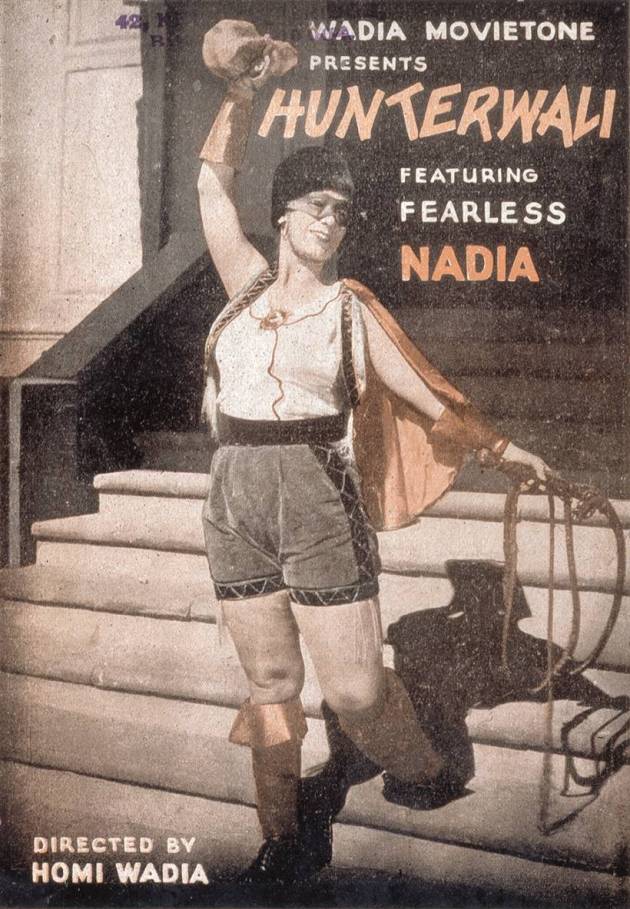 2 / 11
2 / 11A poster of Hunterwali (1935): The film that ushered in the Nadia craze, although "she had proven popular with audiences in a cameo role as a slave girl in Desh Deepak and then as Princess Parizaad in Noor-e-Yaman," informs Roy Wadia, the actress' great-nephew. JBH Wadia, Wadia Movietone's founder, took a gamble in casting her in these movies, bemused by a blonde Nadia's insistence that she could fit into Indian cinema. Hunterwali was a big leap of faith — a female lead in hot pants, tight coats and carrying a whip used liberally on villainous courtiers and other thugs! Reportedly, the original financier developed cold feet and pulled out of the film, forcing JBH Wadia and his younger brother Homi to rely on other funding sources. It was a precarious situation. But the audiences loved it, buying into the Nadia/Hunterwali persona. (Photo: Wadia Movietone/Roy Wadia)
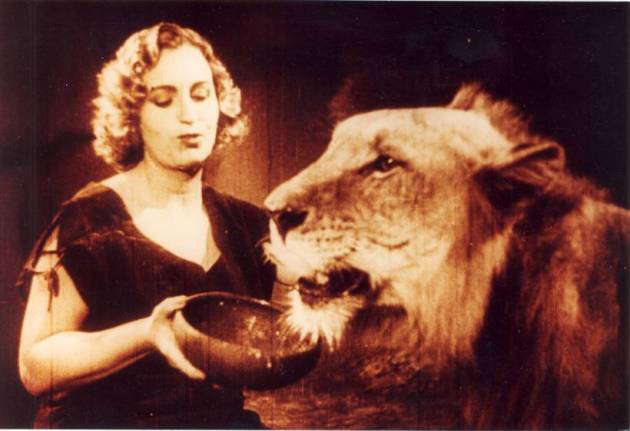 3 / 11
3 / 11A famous scene with lions in Jungle Princess (1942). "She was initially terrified," laughs Roy Wadia. "But she got used to the beasts and the beasts got used to her, too!" (Photo: Wadia Movietone/Roy Wadia)
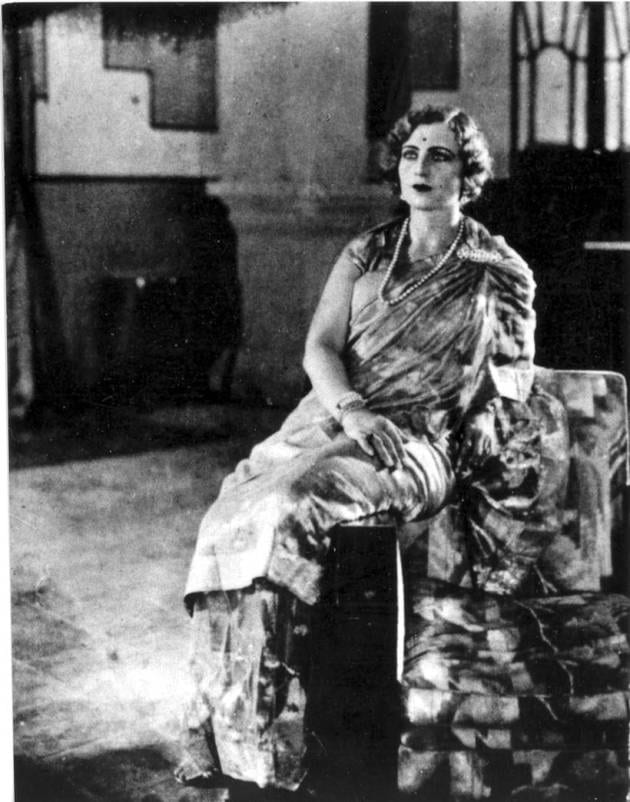 4 / 11
4 / 11"Nadia switched easily from Western attire to Indian sarees and other ethnic wear, usually at the end of a film when her character wanted to drive home the point that she was at heart a good Indian girl (she was originally born in Australia) even though, of course, she was obviously a white, blonde woman, a disconnect that didn't matter to her adoring audiences who bought the persona lock, stock and barrel," says Wadia, adding," This ironic dichotomy was at the heart of her success." (Photo: Wadia Movietone/Roy Wadia)
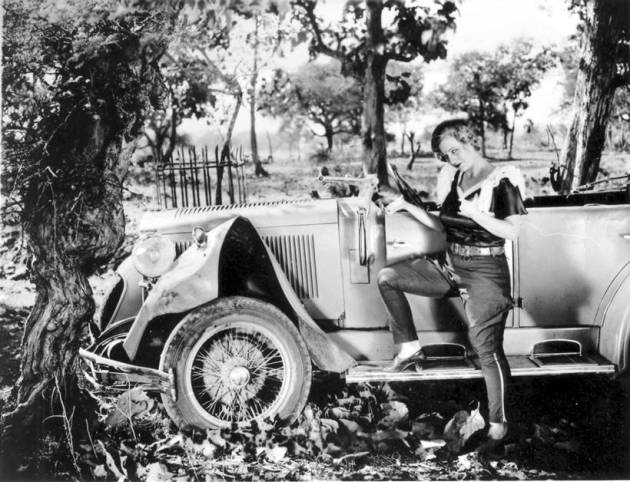 5 / 11
5 / 11A car called Rolls Royce ki Beti: Cars, like horses, played an important role in Wadia Movietone's stunt films with Nadia and other actors. "Rolls Royce ki Beti" was the most popular car in this category, making an appearance in many films, the star of chase sequences as well as comic ones. Wadia says, "The car would often move on its own at critical moments and even drive on without a steering wheel or other key parts." (Photo: Wadia Movietone/Roy Wadia)
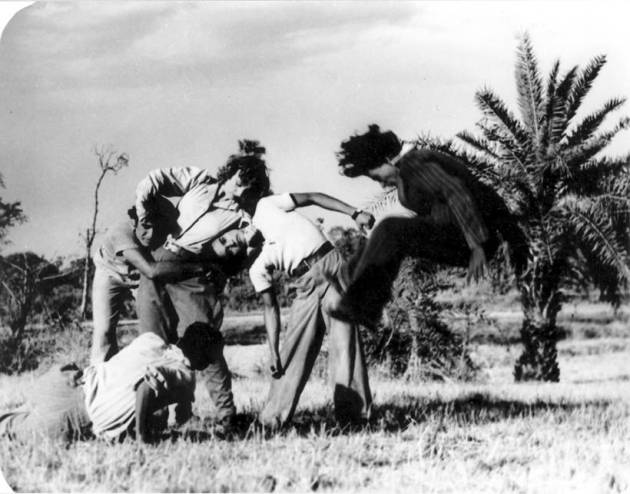 6 / 11
6 / 11The stunts and "violence" in the Nadia-Wadia Movietone universe were carefully choreographed. According to Roy, Nadia and the other actors would practice among themselves, with guidance from Jamshed and Homi. Nadia and Co. did all the stunts themselves. There were no body doubles. This sometimes put them at great risk. "Actors today wouldn't dare do what Nadia and her colleagues did. But the authenticity is what allows these films to deliver such a punch, so to speak. Audiences knew this was 'real' and that is what made it all so magical," Roy Wadia explains. (Photo: Wadia Movietone/Roy Wadia)
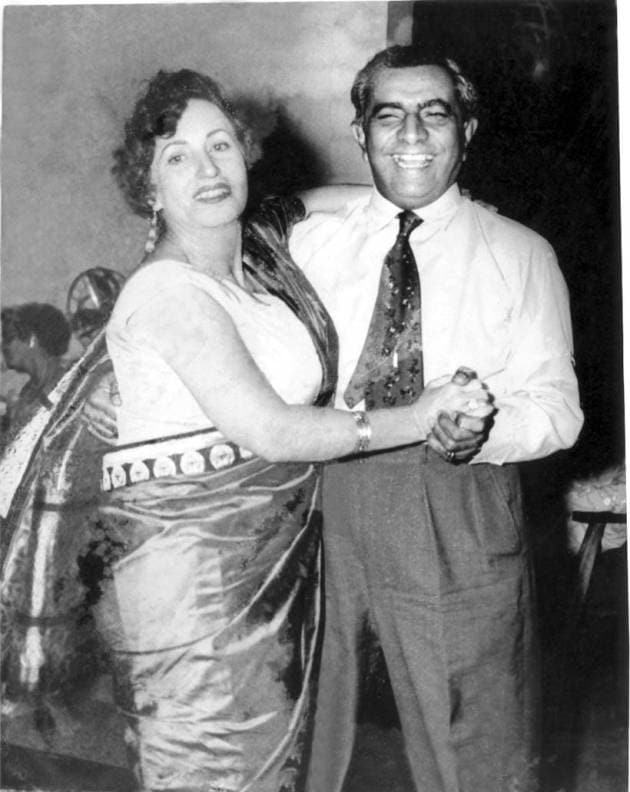 7 / 11
7 / 11Nadia, or Mary Ann Evans and Homi Wadia most likely on their wedding day: Roy describes their love story as "bittersweet." Homi couldn't marry Mary for decades, given the opposition from his conservative Parsi mother Dhunmai, even though Jamshed 'JBH' Wadia, the studio's founder, urged them to wed, saying he would support them all the way. Mary and Homi only tied the knot once his mother had passed away, by which time it was too late for them to start a family. Homi eventually adopted Mary's son, Bobby Jones, from a previous relationship. Bobby Jones recently passed away in Australia where he had settled decades ago. (Photo: Wadia Movietone/Roy Wadia)
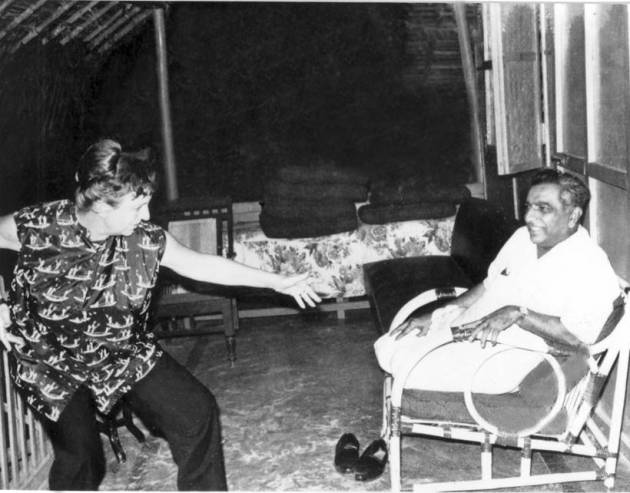 8 / 11
8 / 11Mary and Homi's home away from home was their shack at Juhu, where they would hold parties across the year, including their legendary Christmas Eve bash. Homi would dress up as Santa Claus and make an appearance in a dramatic fashion, often referring to the news headlines of the day. He rode in on a camel at the height of the oil crisis in the 1970s when India had to rely on Saudi Arabia and the Middle East more than ever for oil imports. (Photo: Wadia Movietone/Roy Wadia)
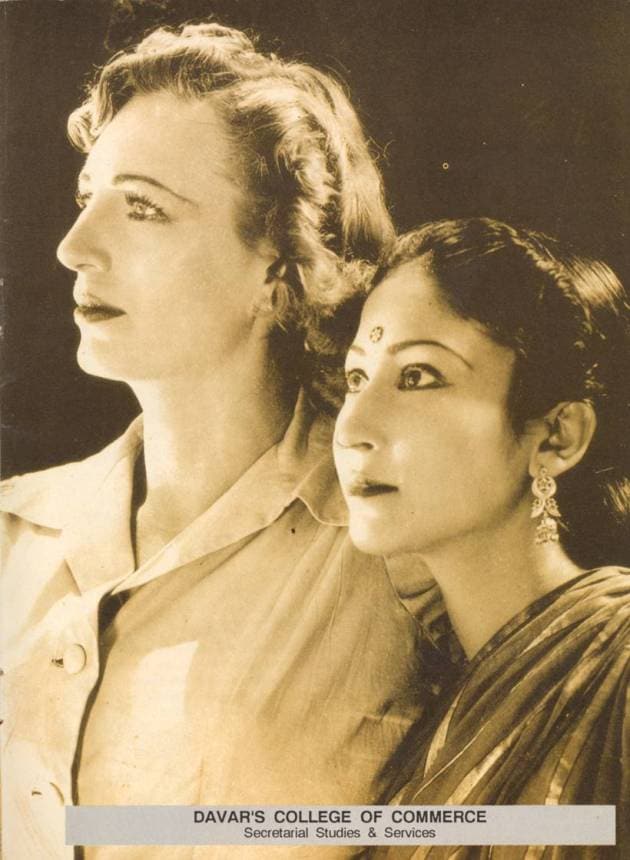 9 / 11
9 / 11Poster Girl of Feminism: Nadia attempted a few "serious" roles as well, but it was a hard sell for audiences used to her Hunterwali/stunt queen persona. She worked on her Hindi and was a consummate professional, learning her lines by heart. It was easier for her to incorporate serious messages on women's rights and emancipation within the wider context of a stunt film. One example is Diamond Queen (1940), which mixed stunts, slapstick and important issues such as fighting corruption, advocating education and literacy and exhorting Indian women to rise up against chauvinism and patriarchy. (Photo: Wadia Movietone/Roy Wadia)
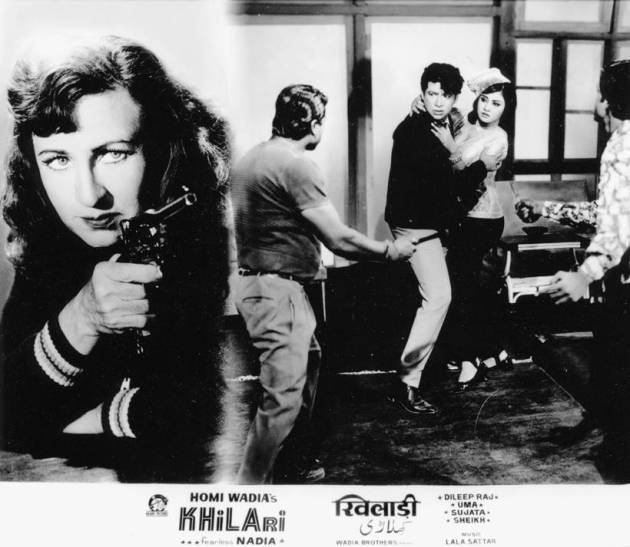 10 / 11
10 / 11Khilari in 1968 was Nadia's final film as a lead actress. She was in her late 50s. The publicity photos were touched up to roll back the years, but her age is obvious in the film itself, although it's a fun movie, where she plays a female James Bond. The romantic leads are played by other actors, and Nadia serves as a sort of mentor to the rest of the cast. Much of the film was shot at the Wadia Movietone studio in Chembur, with action scenes at a nearby factory with huge silos. (Photo: Wadia Movietone/Roy Wadia)
 11 / 11
11 / 11Nadia in Khilari. As flamboyant and high-spirited as ever. (Photo: Wadia Movietone/Roy Wadia




No comments:
Post a Comment